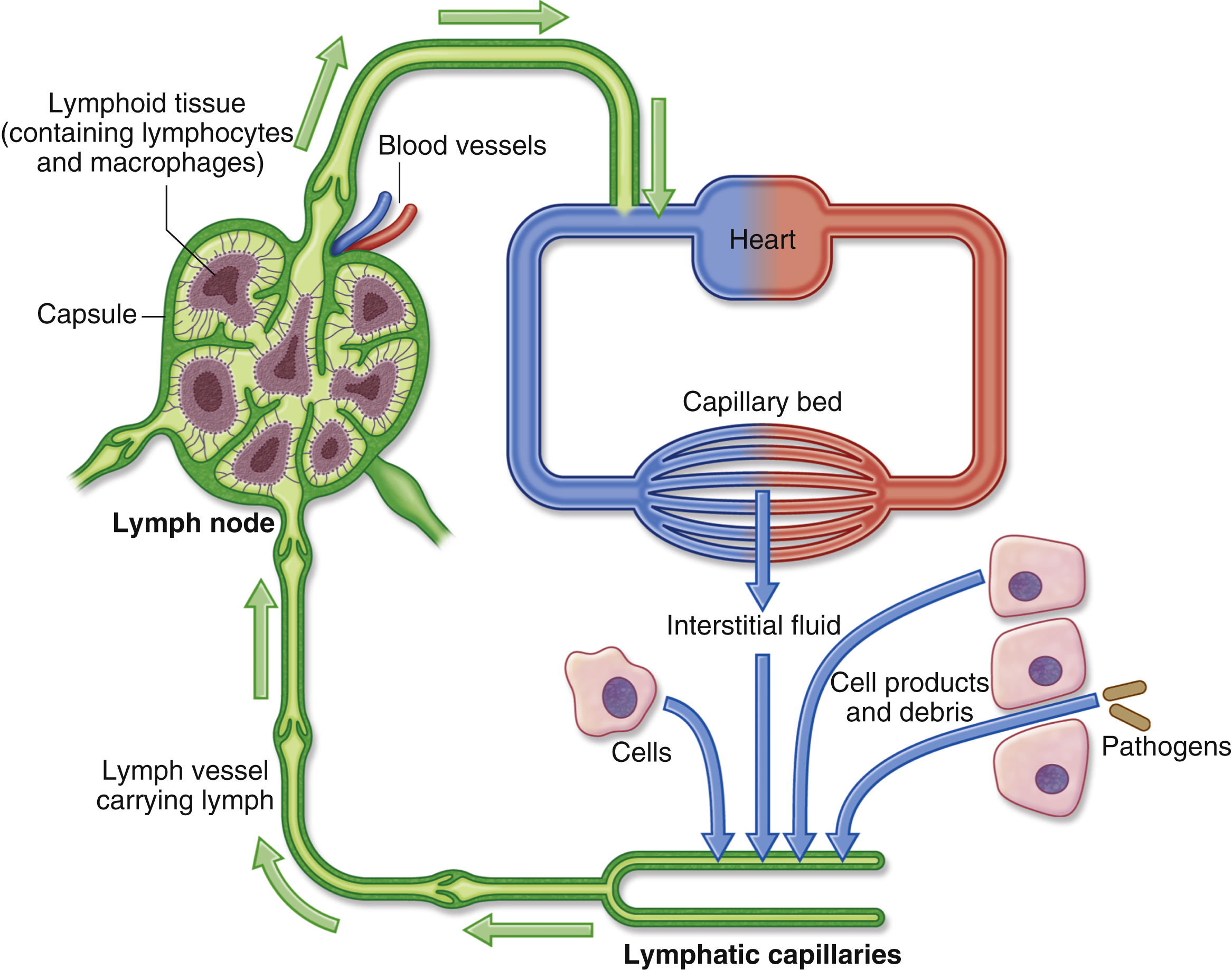lymphatic system, a vast, complex network of capillaries, thin vessels, valves, ducts, nodes, and organs that helps protect and maintain the internal fluid environment of the entire body by producing, filtering, and conveying lymph and producing various blood cells. The lymphatic network also transports fats, proteins, and other substances to the blood system and restores 60% of the fluid that filters out of the blood capillaries into interstitial spaces during normal metabolism. Small semilunar valves throughout the lymphatic network help to control the flow of lymph and, at the junction with the venous system, prevent venous blood from flowing into the lymphatic vessels. The lymph collected throughout the body drains into the blood through two ducts situated in the neck. The thoracic duct that rises into the left side of the neck is the major vessel of the lymphatic system and conveys lymph from the whole body, except for the right quadrant, which is served by the right lymphatic duct. Lymph flows into the general circulation through the thoracic duct at a rate of about 125 mL per hour during routine exertion. Various body dynamics such as respiratory pressure changes, muscular contractions, and movements of organs surrounding lymphatic vessels combine to pump the lymph through the lymphatic system. The lymphatic capillaries, which are the beginning of the system, abound in the dermis of the skin, forming a continuous network over the entire body, except for the cornea. The system also includes specialized lymphatic organs, such as the tonsils, the thymus, and the spleen. See also lymph, lymph node, lymph vessels, spleen, thymus, Color Atlas of Human Anatomy, pp. A20-A22.

